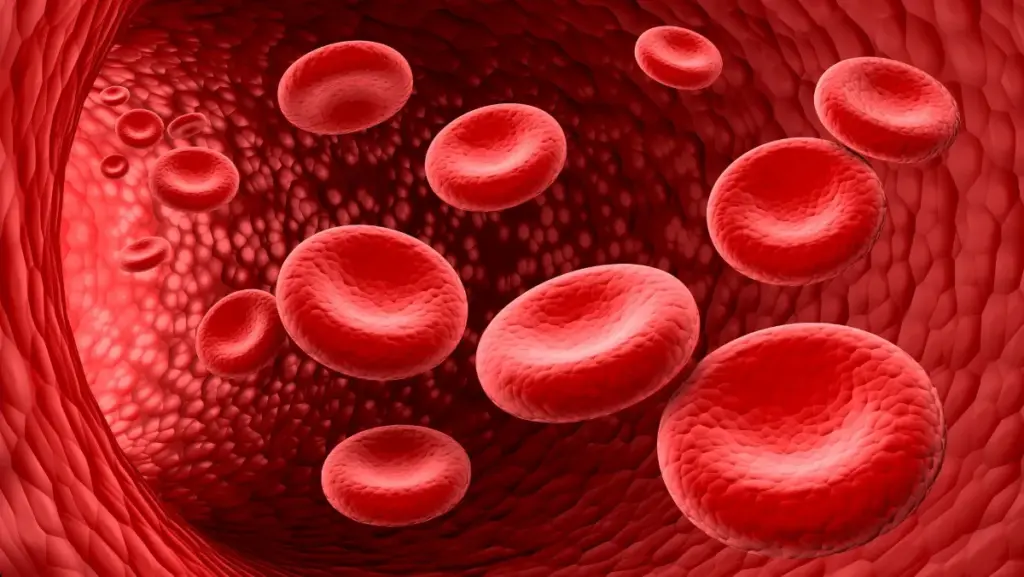
The elbow is a pivotal joint that connects the upper arm to the forearm, allowing complex movements essential for daily tasks such as lifting, pushing, and precise hand coordination. Because the elbow is used so often and has a complex structure, it is prone to a range of injuries and conditions that can limit its function and lead to considerable pain. Issues such as tennis elbow, fractures, and nerve compressions are common and can affect people of all ages and activity levels.
Proper diagnosis and treatment are crucial to restore mobility and strength while preventing long-term disability. Advances in surgical techniques, including elbow replacement, and tailored rehabilitation programs have vastly improved outcomes for patients experiencing severe joint damage or chronic pain. Understanding the elbow’s anatomy, common injuries, and treatment options helps in making informed decisions about care and recovery.
The elbow is a hinge joint created by the connection of three bones: the humerus of the upper arm, and the radius and ulna of the forearm. It enables two main movements—bending (flexion) and straightening (extension)—as well as rotational motions of the forearm known as pronation and supination. These movements are essential for positioning the hand in space and performing everyday functions like writing, lifting, and throwing.
Key anatomical features include:
The elbow’s intricate structure balances strength and flexibility but can be prone to overuse injuries, trauma, and nerve-related conditions affecting overall arm functionality.
Tennis elbow, medically known as lateral epicondylitis, is a common overuse injury causing pain on the outer part of the elbow. It results from repetitive stress to the tendons that attach the forearm muscles to the bony prominence of the lateral epicondyle. Although commonly associated with tennis players, it affects a wide range of individuals performing repetitive wrist and arm motions.
Causes include:
Symptoms to recognize:
Treatment approaches often begin conservatively:
In rare instances, surgery may be required to remove damaged tendon tissue. Early intervention can prevent chronic pain and loss of function.
Elbow fractures and dislocations are serious injuries resulting from trauma such as falls, direct blows, or accidents. A fracture involves a break in one or more of the elbow bones, while dislocation occurs when the joint surfaces are forced out of their normal alignment.
Common types include:
Symptoms typically involve:
Initial management involves immobilization and pain control. Imaging, such as X-rays or CT scans, determines the fracture type and severity. Treatment options range from casting and splinting to surgical fixation using plates, screws, or pins to realign and stabilize the bones.
Prompt treatment is essential to avoid complications like stiffness, nerve damage, or arthritis. Rehabilitation after healing is critical to regain motion and strength.
Cubital tunnel syndrome arises from compression or irritation of the ulnar nerve as it passes through the cubital tunnel on the inner side of the elbow. This condition leads to numbness, tingling, and weakness primarily affecting the ring and little fingers.
Causes include:
Signs and symptoms to watch for:
Conservative treatment options:
In severe or persistent cases, surgical decompression or nerve transposition may be necessary to relieve pressure and restore nerve function.
Elbow replacement surgery, or total elbow arthroplasty, is a specialized procedure to replace a damaged or arthritic elbow joint with artificial components. This surgery is considered when conservative treatments fail to relieve pain or restore function in cases of severe arthritis, fractures, or joint degeneration.
Indications for surgery include:
The procedure involves removing the damaged bone and cartilage and replacing them with metal and plastic prosthetic parts designed to mimic natural joint movement. Elbow replacement aims to reduce pain, improve range of motion, and restore arm strength.
Advantages of elbow replacement:
Recovery requires a carefully managed rehabilitation plan to prevent stiffness and maximize strength. While complications are uncommon, risks include infection, prosthetic loosening, or nerve injury, which are minimized with expert surgical care.
Rehabilitation after elbow surgery is critical for restoring mobility, strength, and function. It begins with protecting the surgical site while preventing stiffness and gradually increasing activity based on healing progress.
Phases of rehabilitation include:
Physical therapy sessions guide patients through progressive stages tailored to their surgery type and individual recovery. Patient adherence and consistent exercise are essential for optimal outcomes. Rehabilitation aims not only at regaining movement but also preventing complications such as joint contracture and muscle weakness.
The elbow plays a vital role in the complex functions of the arm, enabling precise movements essential for countless everyday tasks. Conditions affecting the elbow, from overuse injuries like tennis elbow to traumatic fractures and nerve compressions, can significantly impair quality of life if left untreated. Advances in diagnostic tools and treatment modalities, including surgical options like elbow replacement, offer effective solutions for severe or chronic problems. Comprehensive post-operative rehabilitation ensures recovery of strength and function, minimizing long-term limitations.
At Kannappa Memorial Hospital, expert orthopedic specialists provide personalized care covering diagnosis, minimally invasive surgery, and advanced rehabilitation techniques. Whether managing acute injuries or chronic degenerative conditions, the hospital’s multidisciplinary approach supports patients in regaining pain-free mobility and returning to their active lifestyles with confidence.
The elbow is a pivotal joint that connects the upper arm to the forearm, allowing complex movements essential for daily tasks such as lifting, pushing, and precise hand coordination. Because the elbow is used so often and has a complex structure, it is prone to a range of injuries and conditions that can limit its function and lead to considerable pain. Issues such as tennis elbow, fractures, and nerve compressions are common and can affect people of all ages and activity levels.
Proper diagnosis and treatment are crucial to restore mobility and strength while preventing long-term disability. Advances in surgical techniques, including elbow replacement, and tailored rehabilitation programs have vastly improved outcomes for patients experiencing severe joint damage or chronic pain. Understanding the elbow’s anatomy, common injuries, and treatment options helps in making informed decisions about care and recovery.
Elbow Anatomy & Function
Tennis Elbow (Lateral Epicondylitis)
Elbow Fractures & Dislocations
Cubital Tunnel Syndrome
Elbow Replacement Surgery
Post-Surgery Rehabilitation
Conclusion
The elbow is a hinge joint created by the connection of three bones: the humerus of the upper arm, and the radius and ulna of the forearm. It enables two main movements—bending (flexion) and straightening (extension)—as well as rotational motions of the forearm known as pronation and supination. These movements are essential for positioning the hand in space and performing everyday functions like writing, lifting, and throwing.
Key anatomical features include:
The elbow’s intricate structure balances strength and flexibility but can be prone to overuse injuries, trauma, and nerve-related conditions affecting overall arm functionality.
Tennis elbow, medically known as lateral epicondylitis, is a common overuse injury causing pain on the outer part of the elbow. It results from repetitive stress to the tendons that attach the forearm muscles to the bony prominence of the lateral epicondyle. Although commonly associated with tennis players, it affects a wide range of individuals performing repetitive wrist and arm motions.
Causes include:
Symptoms to recognize:
Treatment approaches often begin conservatively:
In rare instances, surgery may be required to remove damaged tendon tissue. Early intervention can prevent chronic pain and loss of function.
Elbow fractures and dislocations are serious injuries resulting from trauma such as falls, direct blows, or accidents. A fracture involves a break in one or more of the elbow bones, while dislocation occurs when the joint surfaces are forced out of their normal alignment.
Common types include:
Symptoms typically involve:
Initial management involves immobilization and pain control. Imaging, such as X-rays or CT scans, determines the fracture type and severity. Treatment options range from casting and splinting to surgical fixation using plates, screws, or pins to realign and stabilize the bones.
Prompt treatment is essential to avoid complications like stiffness, nerve damage, or arthritis. Rehabilitation after healing is critical to regain motion and strength.
Cubital tunnel syndrome arises from compression or irritation of the ulnar nerve as it passes through the cubital tunnel on the inner side of the elbow. This condition leads to numbness, tingling, and weakness primarily affecting the ring and little fingers.
Causes include:
Signs and symptoms to watch for:
Conservative treatment options:
In severe or persistent cases, surgical decompression or nerve transposition may be necessary to relieve pressure and restore nerve function.
Elbow replacement surgery, or total elbow arthroplasty, is a specialized procedure to replace a damaged or arthritic elbow joint with artificial components. This surgery is considered when conservative treatments fail to relieve pain or restore function in cases of severe arthritis, fractures, or joint degeneration.
Indications for surgery include:
The procedure involves removing the damaged bone and cartilage and replacing them with metal and plastic prosthetic parts designed to mimic natural joint movement. Elbow replacement aims to reduce pain, improve range of motion, and restore arm strength.
Advantages of elbow replacement:
Recovery requires a carefully managed rehabilitation plan to prevent stiffness and maximize strength. While complications are uncommon, risks include infection, prosthetic loosening, or nerve injury, which are minimized with expert surgical care.
Rehabilitation after elbow surgery is critical for restoring mobility, strength, and function. It begins with protecting the surgical site while preventing stiffness and gradually increasing activity based on healing progress.
Phases of rehabilitation include:
Physical therapy sessions guide patients through progressive stages tailored to their surgery type and individual recovery. Patient adherence and consistent exercise are essential for optimal outcomes. Rehabilitation aims not only at regaining movement but also preventing complications such as joint contracture and muscle weakness.
The elbow plays a vital role in the complex functions of the arm, enabling precise movements essential for countless everyday tasks. Conditions affecting the elbow, from overuse injuries like tennis elbow to traumatic fractures and nerve compressions, can significantly impair quality of life if left untreated. Advances in diagnostic tools and treatment modalities, including surgical options like elbow replacement, offer effective solutions for severe or chronic problems. Comprehensive post-operative rehabilitation ensures recovery of strength and function, minimizing long-term limitations.
At Kannappa Memorial Hospital, expert orthopedic specialists provide personalized care covering diagnosis, minimally invasive surgery, and advanced rehabilitation techniques. Whether managing acute injuries or chronic degenerative conditions, the hospital’s multidisciplinary approach supports patients in regaining pain-free mobility and returning to their active lifestyles with confidence.
The optimal treatment for elbow pain depends on the cause and severity. Mild cases often improve with rest, ice, and over-the-counter anti-inflammatory medications. Physical therapy focusing on stretching and strengthening exercises is highly effective. In persistent or severe conditions, corticosteroid injections or surgical interventions might be necessary. Early diagnosis and a tailored treatment plan ensure faster recovery and reduced risk of chronic issues.
Elbow pain can result from various causes including tendon inflammation (such as tennis elbow), fractures, dislocations, nerve compression (cubital tunnel syndrome), arthritis, or repetitive strain injuries. Overuse, trauma, poor technique during physical activities, and degenerative changes can all contribute. Proper assessment is essential to identify the underlying cause and provide appropriate treatment.
Immediate relief from elbow pain often involves resting the joint, applying ice to reduce inflammation, and taking non-steroidal anti-inflammatory drugs (NSAIDs). Avoiding activities that worsen symptoms is crucial. Gentle stretching or wearing a brace may help. However, addressing the root cause through professional evaluation and therapy is necessary for sustained relief.





